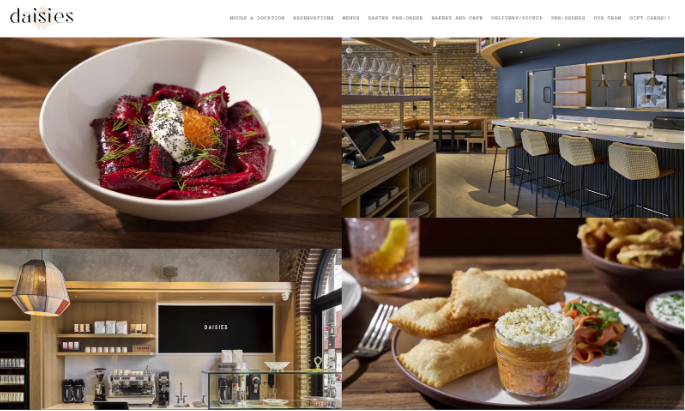Unlike Joan Jett’s hit 1980s rock song Bad Reputation, you can’t throw caution to the wind when it comes to your restaurant’s brand. Restaurant reputation management must be constantly top of mind because your reputation directly affects your bottom line.
That’s because diners take restaurant reviews seriously. Nearly 50% of consumers are more likely to order from a restaurant thanks to reading a positive online review, while 29% are less likely to order after reading a negative review. And while you can’t control what customers write online about your restaurant, there are a few restaurant review management strategies you can use to positively influence their feedback – and your brand’s image.
In this guide to online restaurant reputation management, we’ll cover:
- What restaurant reputation management entails
- The importance of reputation management for restaurants
- 11 restaurant reputation management tips you can try today
What is Restaurant Reputation Management?
Restaurant reputation management is a key part of your public relations strategy. It’s the ongoing process of monitoring and answering the feedback your restaurant receives from customers and other stakeholders (think media outlets like your local newspaper or radio station).
Reputation management for restaurants should take place across a variety of channels. Online, it can include engaging with Yelp reviews, comments on your social media feeds, and even conversations in communities like Reddit forums.

The Importance of Reputation Management for Restaurants
Understanding how reputation management impacts a restaurant is a critical first step to keeping your image in tip-top shape. When you actively manage your brand’s reputation, you have more control over the conversation about your business.
In contrast, when you don’t take your reputation seriously, you risk receiving negative customer reviews that may ward off newcomers to your venue. This is most true among Millennials.
“As consumers in their prime earning years, Millennials are especially important to restaurants,” reports PYMNTS. “Sixty-one percent of Millennials searched for restaurant reviews online in the month leading up to our survey, exceeding the 57% average among all surveyed consumers.”
The reality is, diners are regularly searching the internet for information on restaurants. What will they find about yours? It’s your responsibility to shape the narrative about your brand (also known as restaurant brand management) in a way that will fuel your business’ success.
11 Restaurant Reputation Management Tips

1. Optimize Your Online Presence
A diner’s journey almost always starts online first. In fact, 85% look up a restaurant’s online menu before visiting the venue, according to our 2024 American Diner Trends Report. This means online restaurant reputation management is crucial, and you should be paying close attention to your digital real estate.
Start by ensuring your website is up to date, loads quickly, formats properly on mobile, and is optimized for search engines. From a visual perspective, it should be clean and enticing. The same goes for any other platforms on which you have an online presence (Yelp, Facebook, Instagram, etc.). For instance, top Chicago restaurant Daisies has a visually striking home page that showcases both the restaurant’s beautiful food and interior design.
2. Regularly Monitor Your Reviews
Bad online reviews are one of the top three reasons diners avoid certain restaurants, surpassed only by a health inspection warning and negative feedback from friends, according to our 2024 American Diner Trends Report. This is why you must regularly monitor your reviews across all platforms so you’re always on top of guest feedback. Doing so will enable you to take action quickly to implement changes in your restaurant as needed.
Depending on how frequently you typically receive reviews, you could block a standing time in your calendar for 30 minutes every morning or twice a week to check relevant digital platforms for new reviews. By setting this time aside, you’ll also have the opportunity to go through and remove Yelp spam comments that people have left, so you can protect your restaurant’s online reputation.

3. Swiftly Respond to Negative Reviews
If you’re monitoring your reviews regularly, you can also tackle negative feedback faster. This is an essential part of restaurant customer service. Not only does it offer you an opportunity to rebuild the relationship with your dissatisfied guest, but it also shows other diners that you take their feedback to heart.
Responding professionally to negative feedback is an especially crucial part of restaurant review management and a tricky skill to master. Austin-based restaurant Hestia offers a perfect example of how to do this with tact by acknowledging the guest’s experience and thanking them for their feedback.
4. Keep an Eye on Social Media
Over 40% of diners always or often look up a restaurant on social media before deciding whether to eat there, according to our 2024 American Diner Trends Report. This means social media is an important place to focus your reputation management efforts, especially if your target customer skews younger – since it’s a growing Gen Z dining trend to turn these platforms for reviews.
People may also turn to social media instead of leaving a review on a platform like Google or Yelp, so be sure to keep an eye on your social profiles. Look beyond your own profiles, too, and review tags from other users. This is easy to do – for instance, on Instagram you can simply click the ‘tagged’ filter on your profile to view all posts your restaurant has been tagged in. You can also search for relevant hashtags, like #nycrestaurants if you’re in New York. Or, you can search for your brand name to see what content comes up.
5. Encourage Positive Reviews
Reputation management is about being proactive. So, try a tactic like rewarding your biggest fans for sharing their reviews. If you’ve got a loyalty program, send an email to your members letting them in on an exclusive contest. All they have to do is post a review on your preferred online platform for a chance to win a $100 gift card.
Toritos restaurant in India ran a similar contest on Instagram, but instead of asking for a review, the restaurant asked guests to share their favorite dish, which is something else you could try!
6. Team Up With Influencers and Bloggers
Potential customers will always pay more attention to what others say about your brand than what you say about it. This is known as social proof.
Collaborating with social media influencers and food bloggers is a smart way to generate positive social proof for your restaurant. It can also help you reach a wider audience. Try inviting a few influencers and bloggers for a complimentary meal or special event in exchange for honest reviews or social media coverage.
7. Host Events and Promotions
Everyone loves a good time, a good deal, and a good cause! This is why hosting special events and running promotions is a great way to drum up positive publicity for your restaurant. For instance, you could team up with a local charity to donate a portion of the proceeds from your event to the organization’s cause.
Abbey Burger Mt. Washington in Baltimore did exactly that when the restaurant teamed up with Maryland-based non-profit Best Buddies. Abbey Burger donated 15% of sales to the organization, which supports people with intellectual and developmental disabilities.
8. Keep an Eye on Competitors
It’s also smart to watch what other restaurants are doing to stay competitive in the market. This will help your brand build a reputation for being on-trend rather than outdated.
Analyze your competitors’ strengths and weaknesses, menu offerings, pricing strategies, and diner reviews. Use the insights you gather to differentiate your restaurant and tailor your offerings to meet customers’ evolving needs.
9. Run a Public Relations Campaign
If you want to make a bigger investment into your restaurant’s reputation, consider calling in a PR pro. That’s what Starbucks did with its Every Table Has a Story campaign, launched in 2022. The PR campaign centered on building Starbucks’ reputation as a “third place” for customers – that cozy, familiar spot that’s not home or work, but feels just as comfy. It featured a video of an entrepreneur trying to make it on her own, working from her local Starbucks.
As Prohibition PR reports, “This was a great example of a relatable campaign which, through creative storytelling, seeks to establish an emotional connection with its customers. It also highlights how having strong video content can work well to achieve quality media coverage.”
10. Leverage Tech Tools
Investing in restaurant reputation management software like review monitoring platforms or sentiment analysis tools can be a game changer. These solutions can help you streamline the process of tracking and analyzing reviews across multiple platforms. Say hello to better productivity!
Restaurant reputation management software can provide real-time alerts for new reviews, sentiment trends, and emerging issues. This allows you to respond quickly and gain visibility into customer feedback patterns. The result? You can make data-driven decisions to enhance your restaurant’s reputation and customer experience.
11. Prioritize Consistency and Quality
This might seem like a no-brainer, but it’s worth highlighting the foundations of excellence for any restaurant. In addition to prioritizing health and safety, consistency in both your food and service quality is integral to establishing and maintaining a good reputation. So, be sure that every dish receives attention and care in the kitchen and that every guest receives outstanding service in the dining room.
You’re now up to speed on what reputation management entails and how reputation management impacts a restaurant. You also have 11 restaurant reputation management tips you can try today. Let the reviews roll in!
Free social media templates for your restaurant
Sign up for our free weekly TouchBistro Newsletter







